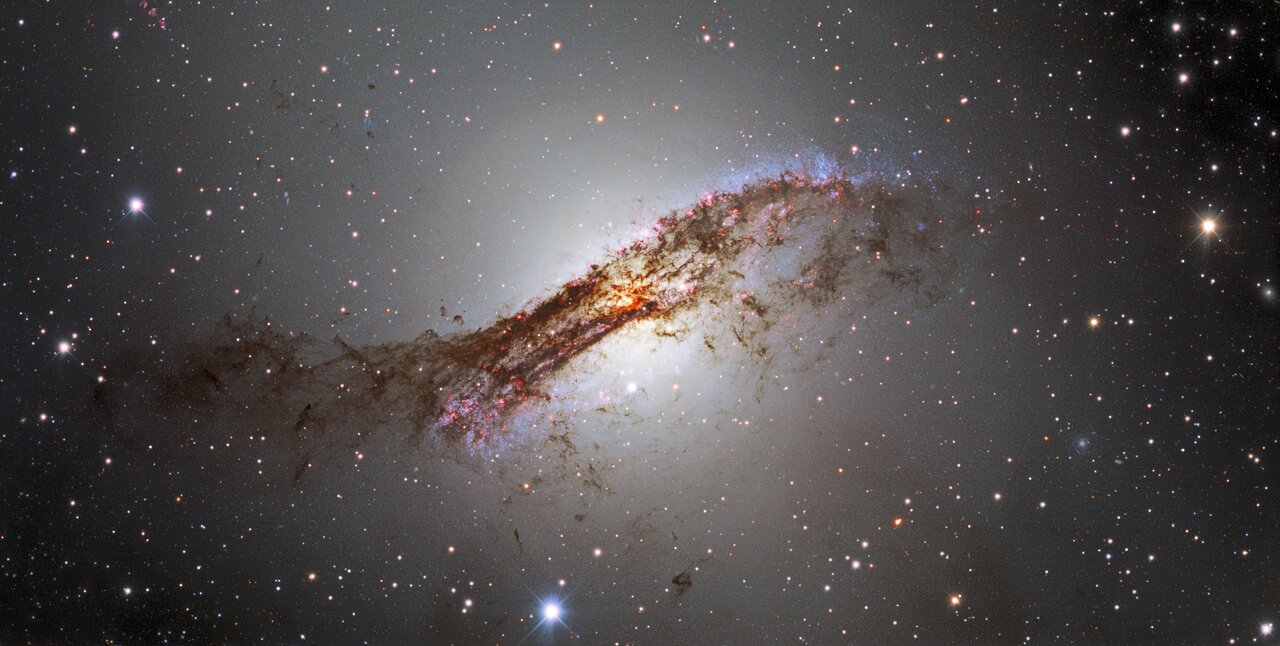Stunning image shows dark tendrils masking giant Centaurus A galaxy near Earth
Scientists have captured a stunning new image of a massive galaxy ringed by dust filaments.
In the image, Centaurus A, which is located more than 12 million light-years away from Earth in the southern constellation Centaurus (the centaur), ripples across space. The galaxy, which was first identified in 1826, is among the best studied in the southern sky because it is so bright and relatively close to Earth.
In the image, although stars glow, swaths of the galaxy are hidden by dust tendrils looping around the galaxy's center, where a supermassive black hole containing 55 million times the mass of the sun, hides and spews out a jet of matter that acts as a bright source of radio light.
Related: Dark energy camera takes hyper-detailed images of nearby dwarf galaxies

Among the dust are reddish hydrogen clouds, where new stars are forming, and faint blue stars outlining the corners of the dust cloud. The galaxy's strange shape is the result of a long-ago encounter with another galaxy that left Centaurus A shrouded in dust.
The image comes from the Dark Energy Camera based at Cerro Tololo Inter-American Observatory in Chile and is part of a project designed to identify rapidly changing objects, like supernovas, occurring in key galaxies of the southern sky.
Editor's note: This story was updated to correct the size of the black hole at the center of Centaurus A. Email Meghan Bartels at mbartels@space.com or follow her on Twitter @meghanbartels. Follow us on Twitter @Spacedotcom and on Facebook.
Get the Space.com Newsletter
Breaking space news, the latest updates on rocket launches, skywatching events and more!
Join our Space Forums to keep talking space on the latest missions, night sky and more! And if you have a news tip, correction or comment, let us know at: community@space.com.

Meghan is a senior writer at Space.com and has more than five years' experience as a science journalist based in New York City. She joined Space.com in July 2018, with previous writing published in outlets including Newsweek and Audubon. Meghan earned an MA in science journalism from New York University and a BA in classics from Georgetown University, and in her free time she enjoys reading and visiting museums. Follow her on Twitter at @meghanbartels.









